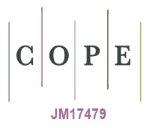Effect of Sea Salt AOT on Precipitation Processes Associated with Red Sea Moisture Flux on Iraq, a Case Study
DOI:
https://doi.org/10.23851/mjs.v33i2.1090Keywords:
Sea salt AOT, precipitation, Total Precipitable water TPW, Cloud top temperature CTTAbstract
Sea salt acquires importance in the process of precipitation formation through its hygroscopic nature. and its role in accelerating the droplet formation process within a moisture saturation less than if it was not present. In this work, the maps of precipitation distribution with sea salt aerosol optical thickness (AOT) as well as moisture flux and wind at an altitude of 50 meters were compared. The data of Three rainy cases, characterized by heavy rains and moisture feeding from the Red Sea were selected. They are respectively 13 to 15 November 2018, 1 December 2018, and 27 to 29 January 2019. Cloud top temperature (CTT) data were obtained from Meteosat satellites (Meteosat 9, and 10). Total Precipitable water (TPW) and sea salt (AOT) were obtained from Model projects: a modern-era retrospective analysis for research and applications 2 (MERRA-2). the correlation coefficient (R) was used to test the relation between the variables like Total Precipitable water (TPW), Cloud top temperature (CTT), precipitation, and Sea Salt AOT. The results showed that there is a good correlation between the sea salt AOT and the amount of precipitation. The work also showed the roles that other variables play in the precipitation process. Where the relationships showed values of correlation coefficients about 0,6 to 0,7 between the variables, leading to the enhancement of precipitation.
Downloads
References
Nonomura, A., Fujisawa, K., Takahashi, M., Matsumoto, H., & Hasegawa, S. Analysis of the actions and motivations of a community during the 2017 torrential rain in Northern Kyushu, Japan. International Journal of Environmental Research and Public Health, 17(7), 2424. (2020).
R. B. Stull, "Practical meteorology: an algebra-based survey of atmospheric science," Amazon, 2017.
J. G. Hudson, S. Noble, and V. Jha, "On the relative role of sea salt cloud condensation nuclei (CCN)," Journal of Atmospheric Chemistry, vol. 68, no. 1, pp. 71-88, 2011.
L. Feng, H. Shen, Y. Zhu, H. Gao, and X. Yao, "Insight into generation and evolution of sea-salt Aerosols from field measurements in diversified marine and Coastal Atmospheres," Scientific Reports, vol. 7, no. 1, 2017.
A. D. Clarke, S. R. Owens, and J. Zhou, "An ultrafine sea-salt flux from breaking waves: Implications for cloud condensation nuclei in the remote marine atmosphere," Journal of Geophysical Research, vol. 111, no. D6, 2006.
L. Yang, S. Mukherjee, G. Pandithurai, V. Waghmare, and P. D. Safai, "Influence of dust AND sea-salt SANDWICH effect on precipitation chemistry over the Western Ghats during summer monsoon," Scientific Reports, vol. 9, no. 1, 2019.
H. M. Horowitz, C. Holmes, A. Wright, T. Sherwen, X. Wang, M. Evans, J. Huang, L. Jaeglé, Q. Chen, S. Zhai, and B. Alexander, "Effects of sea salt aerosol emissions for marine cloud brightening on atmospheric chemistry: Implications for radiative forcing," Geophysical Research Letters, vol. 47, no. 4, 2020.
Dadashazar, H., Wang, Z., Crosbie, E., Brunke, M., Zeng, X., Jonsson, H., Woods, R. K., Flagan, R. C., Seinfeld, J. H., & Sorooshian, A. Relationships between giant sea salt particles and clouds inferred from aircraft physicochemical data. Journal of Geophysical Research: Atmospheres, 122(6), 3421-3434.(2017).
Chen, Y.-C., Wang, S.-H., Min, Q., Lu, S., Lin, P.-L., Lin, N.-H., Chung, K.-S., & Joseph, E. Aerosol impacts on warm-cloud microphysics and drizzle in a moderately polluted environment. Atmospheric Chemistry and Physics, 21(6), 4487-4502. (2021).
Sarangi, C., Tripathi, S. N., Kanawade, V. P., Koren, I., & Pai, D. S. Investigation of the aerosol-cloud-rainfall Association over the Indian summer monsoon region. Atmospheric Chemistry and Physics, 17(8), 5185-5204. (2017).
Goodman, S., Schmit, T. J., Daniels, J. M., & Redmond, R. J. The goes-r series: A new generation of geostationary environmental satellites. Elsevier. (2020).
NASA. (n.d.). GMAO - Global modeling and Assimilation Office research site. NASA. https://gmao.gsfc.nasa.gov/reanalysis/.
Habib, A.; Chen, B.; Khalid, B.; Tan, S.; Che, H.; Mahmood, T.; Shi, G.; Butt, M.T. Estimation and Inter-Comparison of Dust Aerosols Based on MODIS, MISR and AERONET Retrievals over Asian DesertRegions.J. Environ. Sci.,76, 154-266. 2019.
Cheng, T.; Chen, H.; Gu, X.; Yu, T.; Guo, J.; Guo, H. The Inter-Comparison of MODIS, MISR and GOCARTAerosol Products against AERONET Data over China.J. Quant. Spectrosc. Radiat. Transf.,113, 2135-2145. 2012.
Downloads
Key Dates
Published
Issue
Section
License
Copyright (c) 2022 Al-Mustansiriyah Journal of Science

This work is licensed under a Creative Commons Attribution-NonCommercial 4.0 International License.
(Starting May 5, 2024) Authors retain copyright and grant the journal right of first publication with the work simultaneously licensed under a Creative Commons Attribution (CC-BY) 4.0 License that allows others to share the work with an acknowledgement of the work’s authorship and initial publication in this journal.






















